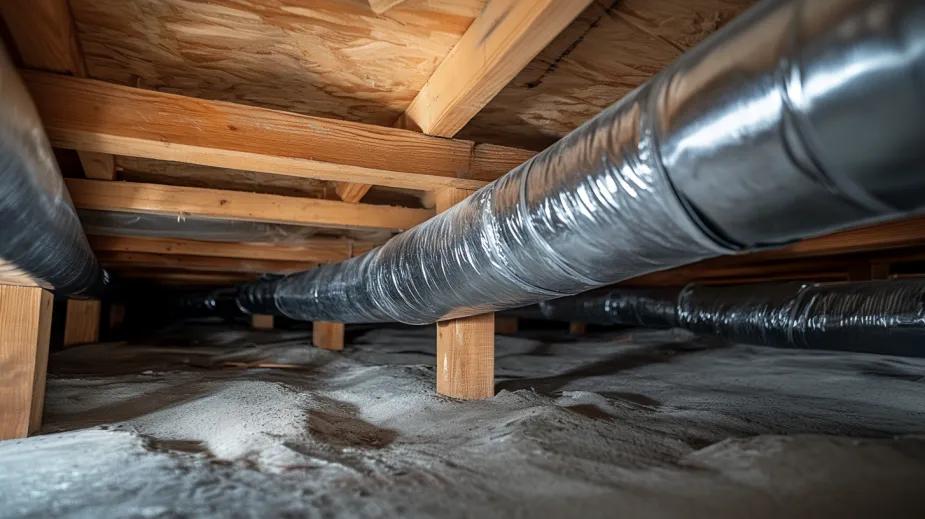The Cost of Replacing Ducts in a Crawl Space

If you’re installing a new HVAC system, it’s a good idea to consider replacing any aging ductwork as well. Ductwork generally lasts about 15 to 20 years, similar to the lifespan of your heating and cooling unit. HVAC.com discusses the cost of replacing ductwork in a crawl space and the factors that can influence prices.
The Average Cost of Replacing Air Ducts in a Crawl Space
The cost of adding new ductwork to a crawl space generally ranges in price from $3,000 to $6,000, including materials and labor. However, several factors can drive this cost higher or lower, which we’ll explain in the next section.
Get several quotes from professional contractors, as prices can vary based on your location, the contractor’s experience, and how complex the installation is.
Factors Affecting Cost
Size of Home
The size of your home plays a large role in determining the cost of installing new ductwork in a crawl space. Larger homes require more extensive duct systems, which can lead to higher material and installation costs. Meanwhile, smaller homes may only need a minimal duct layout, resulting in lower costs. Installing ductwork in a larger home can increase the price by about 20-30%.
Type of Ductwork
The type of ductwork you choose also impacts the final cost. Some of the most common options include flexible ducting, which is usually cheaper and easier to install, and rigid metal ducting, which may offer better durability but at a higher cost. Choosing the right type of ductwork depends on the specifications of your HVAC system and your budget.
Ease of Installation
If your crawl space is easily accessible and has adequate height for installation, labor costs may be lower. However, if the space is cramped or difficult to navigate, it could require more labor hours, increasing the cost.
Condition of the Crawl Space
Has your crawl space seen better days? The condition of the crawl space can also influence costs. If there are issues such as moisture damage or pests, these problems must be addressed before ductwork can be installed. Remediation efforts, such as waterproofing or pest control, can add to the overall price of the project.
Local Codes and Permits
Local building codes and permit requirements can impact the total cost. Some areas require permits for HVAC work, which may include inspection fees. Complying with local regulations can add additional layers of cost, but is crucial for the safety and legality of your installation.
Adding Insulation
Ducts installed in a crawl space should generally be insulated to prevent heat loss in winter and to keep cooled air from escaping in summer to maintain consistent temperatures and improve overall energy efficiency. Ducts running through unconditioned spaces such as crawl spaces and attics can benefit the most from insulation to enhance performance.